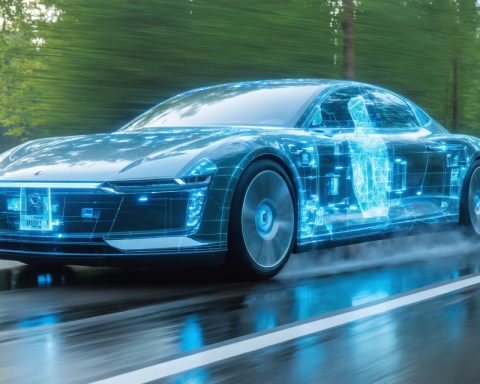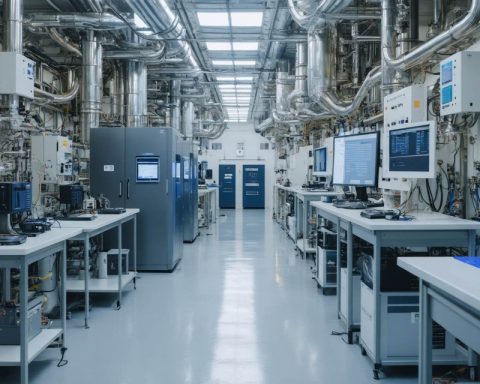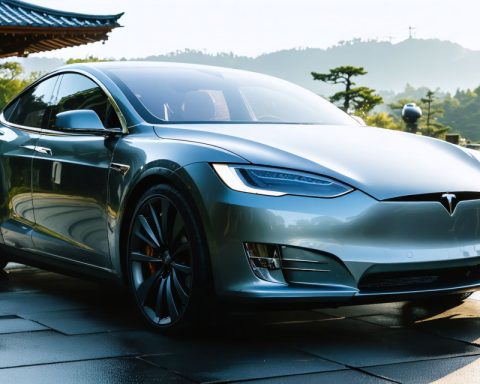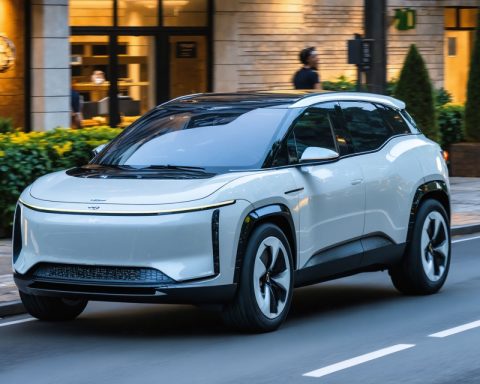- Electric vehicles (EVs) promise a cleaner transport future, but traditional lithium-ion batteries raise environmental concerns due to “forever chemicals” like PFAS.
- PFAS, found in EV batteries, are persistent environmental pollutants, linked to health issues like developmental and reproductive problems.
- Researchers at the University of Chicago are developing PFAS-free EV batteries with a novel, non-fluorinated solvent, offering higher energy densities and stability.
- These innovative batteries aim to combine ecological responsibility with advanced technology, paving the way for sustainable mobility solutions.
- The focus is shifting towards eco-friendly battery design as a crucial step in advancing EV technology, emphasizing environmental responsibility at the design stage.
Electric vehicles (EVs) hold the potential to revolutionize transport, yet lurking beneath their promise lies a significant environmental challenge: the disposal of their batteries. As the ravenous global demand for lithium-ion batteries soars, projected to jump from 700 gigawatt-hours in 2022 to an eye-watering 4.7 terawatt-hours by 2030, according to McKinsey & Company, a shadow is cast on their environmental credentials. The euphoria of a cleaner, greener future is tempered by the knowledge that traditional EV batteries, studded with “forever chemicals,” could spell disaster for our planet.
These notorious substances, scientifically recognized as per- and polyfluoroalkyl substances (PFAS), defy degradation. Permeating from the fabric of our clothes to the coatings of cooking pans, these chemicals harbor the potential to infiltrate water sources and even human bodies, leading to harmful consequences. The Environmental Protection Agency haunts us with revelations of PFAS-linked health issues, ranging from developmental complications in children to reproductive adversities in women.
Yet, a beacon of hope emerges from the University of Chicago, where visionary researchers are pioneering a new era of EV batteries. Discarding the traditional reliance on PFAS, they are crafting cutting-edge innovations that promise to rewrite the playbook of battery chemistry. Intrinsically woven within a battery’s cathode and electrolyte, PFAS have long been the heavy-hitters in maintaining structural integrity. However, the team at the UChicago Pritzker School of Molecular Engineering has disrupted this narrative by developing a novel, non-fluorinated solvent.
Initial laboratory tests reveal an alchemical marvel: these PFAS-free cells exhibit superior ion-pairing, boasting higher energy densities and extending their arms to embrace extreme temperatures with remarkable stability. Under the microscope, they deliver sustained performance, painting a future where EV batteries marry ecological responsibility with technological prowess.
While these avant-garde batteries remain cradled in the experimental phase, they crystallize an essential truth: environmental conscientiousness can and should take root at the design stage. As an avalanche of retired EV batteries stands poised to enter the recycling circle by the decade’s end, the urgency for such forward-thinking innovations rings crystal clear.
The race to perfect EV technology has often echoed Silicon Valley’s mantra of innovation at lightning speed, frequently sidelining long-term environmental implications. Yet, with visionary research and unwavering resolve, a paradigm shift towards eco-friendly battery solutions is gaining momentum. This approach heralds a nuanced understanding: that the preservation of our planet is inextricably linked to the choices we make today in technology design and deployment.
In the pursuit of cleaner, sustainable mobility solutions, it’s not just about how fast we can go, but how thoughtfully we get there. As we venture forward, it is this careful consideration anchored in scientific innovation and environmental responsibility that promises to illuminate a truly sustainable path forward for electric vehicles.
The Hidden Environmental Cost of EV Batteries: What’s Next?
The Environmental Challenge Behind EV Batteries
Electric vehicles (EVs) are often celebrated for their potential to reduce carbon emissions and usher in a new era of sustainable transportation. However, a significant and pressing issue underlies this green revolution: the disposal and environmental impact of EV batteries. As projected by McKinsey & Company, the demand for lithium-ion batteries is set to explode from 700 gigawatt-hours in 2022 to a staggering 4.7 terawatt-hours by 2030. Amidst this rapid growth, the environmental implications of battery disposal and the materials used—particularly per- and polyfluoroalkyl substances (PFAS)—cannot be overlooked.
Understanding the Impact of PFAS
PFAS, often referred to as “forever chemicals,” are notoriously known for their resistance to degradation. These substances are pervasive, found everywhere from clothing to cooking pans, and they have significant health and environmental implications. According to the Environmental Protection Agency (EPA), exposure to PFAS has been linked to serious health issues, including developmental problems in children and reproductive health concerns.
Innovations in Battery Design
Amidst these challenges, researchers at the University of Chicago have made groundbreaking progress. By eliminating reliance on PFAS, they are developing a new class of EV batteries that use a non-fluorinated solvent. This innovation has shown promise in laboratory settings, offering batteries with higher energy densities and better performance in extreme temperatures.
How This Innovation Works
1. Ion-Pairing Superiority: The novel batteries display superior ion-pairing capabilities, which translates to improved energy efficiency.
2. Temperature Resilience: These batteries maintain stability across a range of extreme temperatures, making them suitable for diverse climates.
3. Long-lasting Performance: Laboratory tests suggest these batteries have a longer life, which could reduce the frequency of battery replacement and the associated environmental impact.
The Future of EV Batteries
While these innovative batteries are still in the experimental phase, their potential is immense. With a focus on environmental responsibility during the design stage, these advancements could significantly mitigate the ecological footprint of EVs. As the recycling of retired EV batteries is expected to peak by the end of the decade, the push for such forward-thinking solutions is more critical than ever.
Market Trends and Predictions
– Increased Recycling Initiatives: As battery demand rises, recycling programs are expected to become more prevalent, aiming to recover valuable materials and reduce waste.
– Investment in Sustainable Practices: Companies are likely to increase investments in research and development for eco-friendly materials and recycling technologies.
– Policy and Regulation Evolution: Governments may enforce stricter regulations on battery composition to reduce environmental harm, further driving innovation.
Actionable Recommendations
1. Consider Battery Longevity: When purchasing an EV, prioritize models known for longer battery life and greater efficiency.
2. Support Sustainable Brands: Choose car manufacturers and tech companies that demonstrate commitment to sustainable practices.
3. Participate in Recycling Programs: Properly dispose of batteries and support programs that focus on recycling and reclamation of materials.
Conclusion
As the race for better EV technology continues, we must balance innovation with environmental stewardship. The exciting research emerging from institutions like the University of Chicago marks a shift towards batteries that are not only high-performing but also aligned with ecological needs. This dual focus promises a truly sustainable future for electric vehicles, where progress is measured not just by speed, but by the thoughtfulness of its impact.
For more insights on vehicle sustainability and emerging technologies, visit Forbes or Nature.














